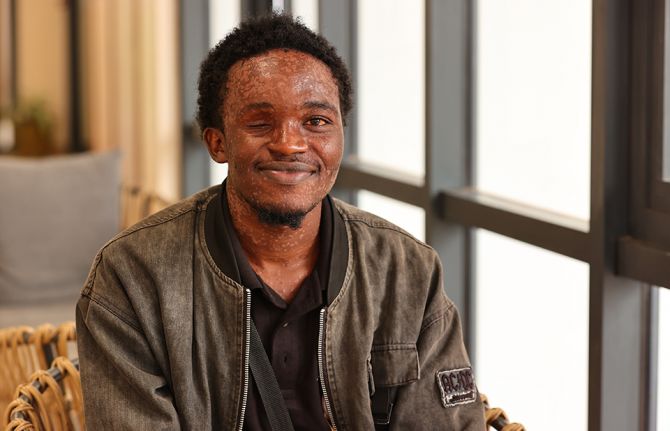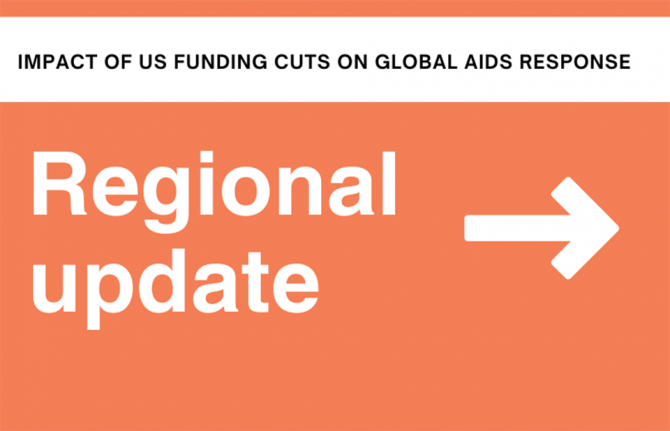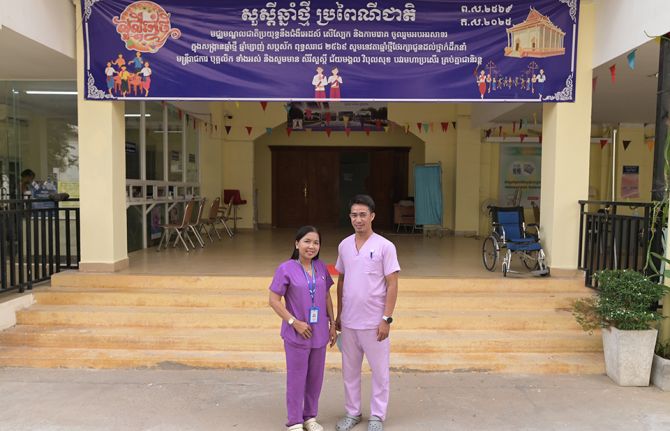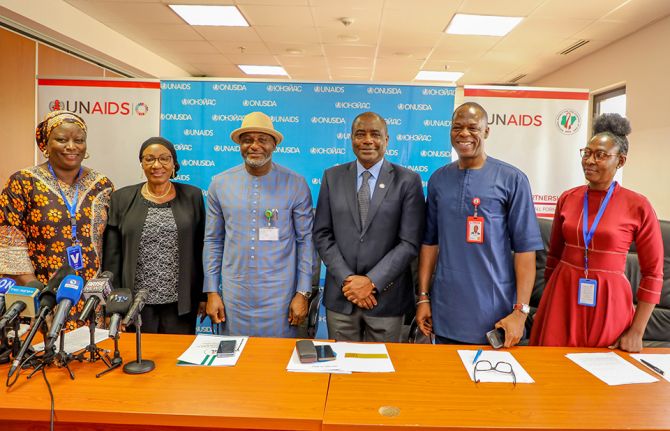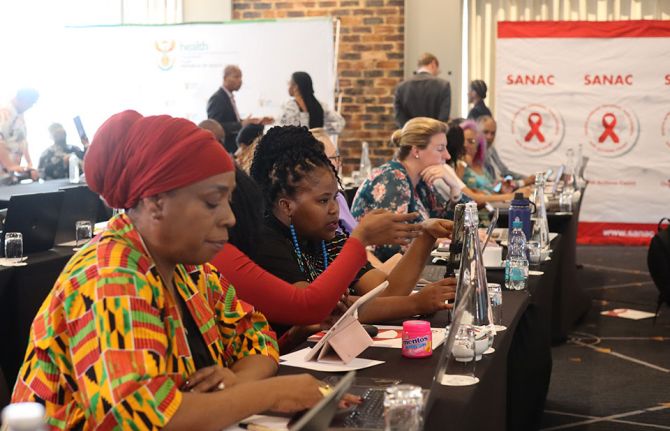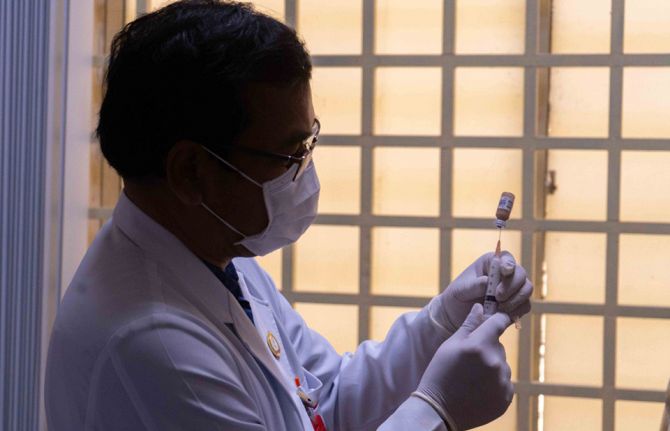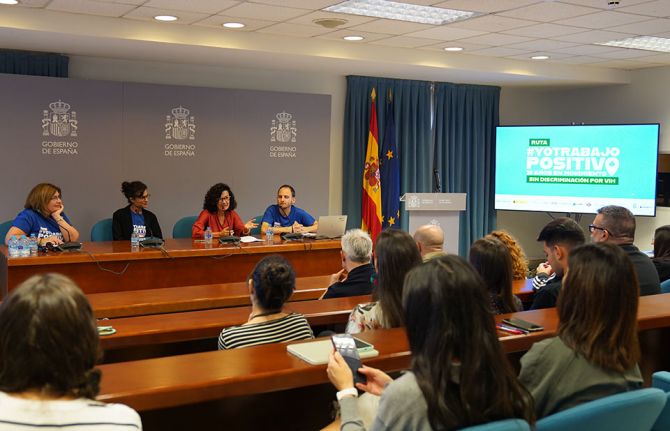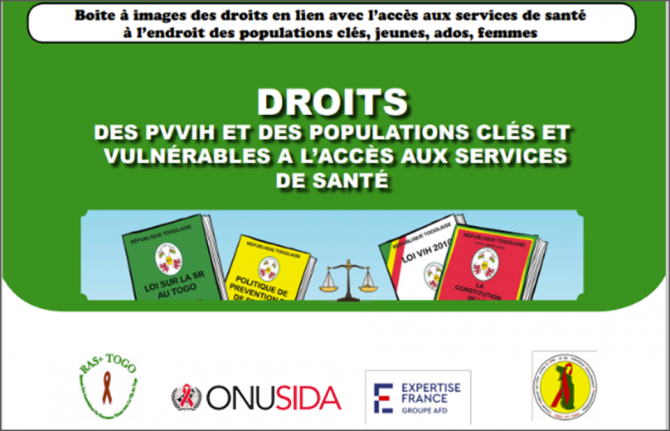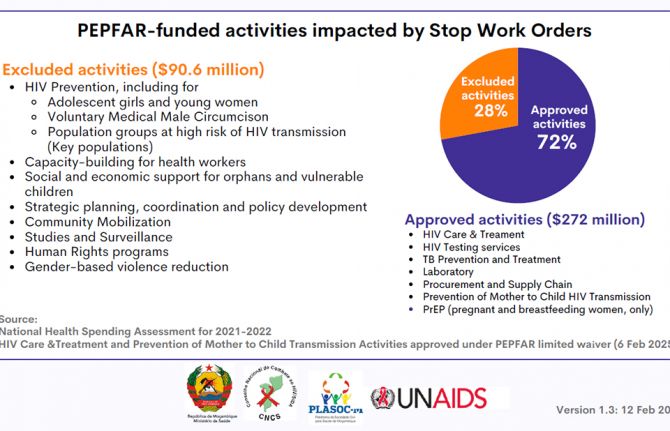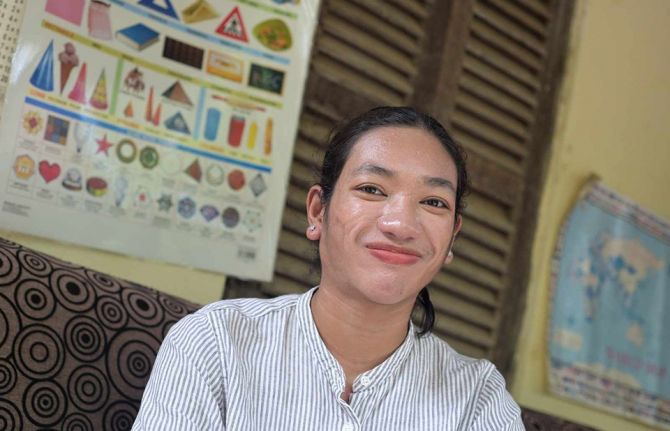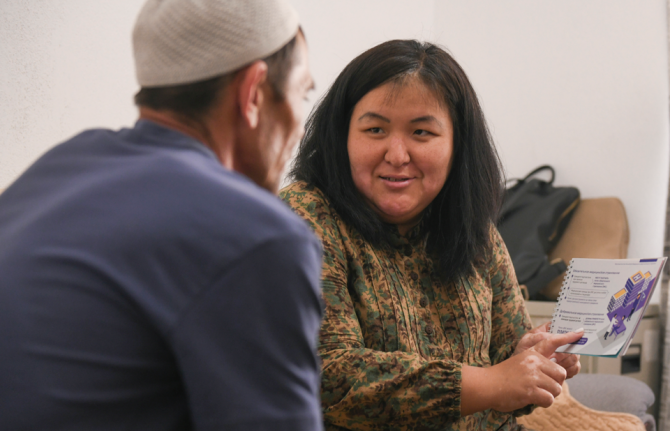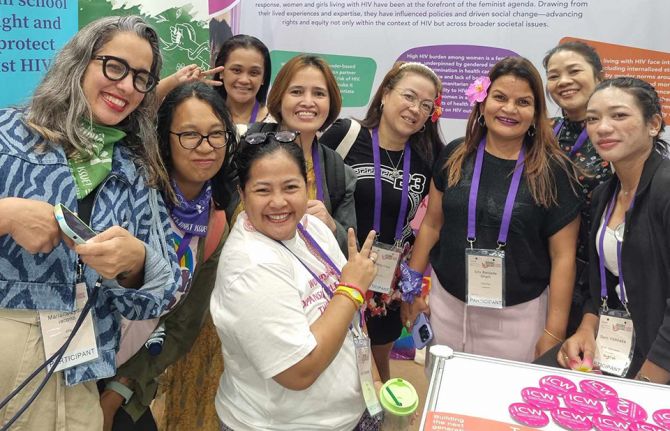
Update
Mozambique to step up its response to HIV
08 December 2015
08 December 2015 08 December 2015HIV prevalence among adults is particularly high in Mozambique. In 2014, an estimated 1.5 million people were living with HIV in the country and HIV prevalence was estimated at 10.6%, the eighth highest in the world. However, the country is firmly committed to adopting the UNAIDS Fast-Track Strategy to break and end its AIDS epidemic by 2030.
With international support, Mozambique has managed to sharply increase its coverage of antiretroviral therapy and HIV testing and counselling since 2012. Expanded treatment coverage for pregnant women living with HIV has resulted in a 73% decline from 2011 to 2014 in new HIV infections among children. New HIV infections among adults have also been reduced, by 40% from 2004 to 2014.
During a joint mission to Mozambique on 7 and 8 December, the Executive Director of UNAIDS, the Executive Director of the Global Fund to Fight AIDS, Tuberculosis and Malaria (Global Fund) and the Coordinator of the United States President’s Emergency Plan for AIDS Relief (PEPFAR) congratulated the country for accelerating its HIV response.
In their first country mission together, Michel Sidibé of UNAIDS, Mark Dybul of the Global Fund and Deborah Birx of PEPFAR held constructive meetings with high-level governmental officials, United Nations representatives, the United States Ambassador and members of civil society. Their mission was aimed at enhancing the support provided to the country for implementing its national priorities and at strengthening the joint partnership.
They all spoke of their continued and common commitment to Mozambique and to ending the AIDS epidemic by 2030. They also highlighted the importance of ensuring that people who test positive for HIV have immediate access to HIV services, including treatment.
In a meeting with President Filipe Jacinto Nyusi, Mr Sidibé praised the government for championing a people-centred approach to health and development for everyone. He also commended the government for adopting a law in 2014 that seeks to protect the rights and dignity of people living with HIV.
Mr Sidibé welcomed the recent creation of a budget line for HIV treatment in the domestic health budget. In a meeting with the Minister of Health, Nazira Karimo Vali Abdula, he stressed that a greater domestic financial commitment is still required for a sustainable response to its epidemic. The country is currently dependent on international donor support.
Mr Sidibé attended the launch of the Fast-Track cities initiative in Maputo, which aims to achieve the UNAIDS 90–90–90 treatment target in the capital. At the signing ceremony, the Mayor and Governor of Maputo City pledged to Fast-Track the AIDS response for marginalized groups and ensure that no one is left behind.
Mr Sidibé also met with Joaquim Alberto Chissano, former President of Mozambique and a Champion for an AIDS-Free Generation in Africa, and Graça Machel, Founder of the Graça Machel Trust and Chair of the Partnership for Maternal, Newborn & Child Health.
Quotes
“By taking a location and population approach to ensure that people at higher risk are reached with HIV services, Mozambique can end its AIDS epidemic by 2030. This will require the pace to quicken in investments, commitment and action, particularly over the next five years. Our collective support for a healthier and stronger Mozambique is unwavering.”
“Being here together with Michel and Mark really follows the vision that was laid out in the International Conference on AIDS and STIs in Africa: to link leadership, science and human rights.”
“Mozambique has made great progress in the fight against the three diseases and we are honoured to be here with the United States President’s Emergency Plan for AIDS Relief and UNAIDS to strengthen our partnership and jointly support the country to achieve even more in the next five years.”
“My government is committed to ending the AIDS epidemic. Personally, I will start speaking about HIV and AIDS as much as possible in the future.”
Region/country
Related

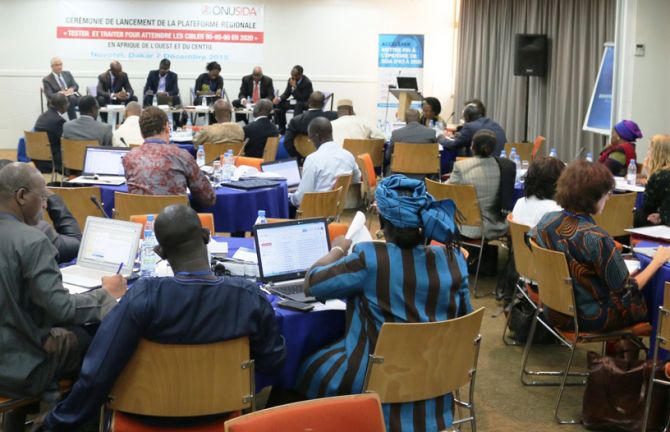
Update
Regional platform to scale up HIV testing and treatment is launched in western and central Africa
14 December 2015
14 December 2015 14 December 2015A regional platform to accelerate access to HIV testing and antiretroviral therapy in western and central Africa was launched by UNAIDS and partners on 7 December in Dakar, Senegal. The platform will enable scale-up of the test and treat approach, which calls for increasing HIV testing and immediately supporting people who test HIV-positive to have access to life-saving treatment.
The regional platform is an innovative mechanism—both a think tank and a task force—that aims to identify and analyse bottlenecks and quickly propose corrective actions to increase access to HIV testing, treatment and viral load tests. The platform will encourage operational research and new solutions, support monitoring to measure progress and allow partners to share experience and best practices. It will also support countries in mobilizing resources for a sustainable AIDS response.
Partners include United Nations agencies, national AIDS committees, technical and financial organizations, civil society and community organizations, and laboratories, researchers and experts.
All partners are committed to collectively contribute to this platform in order to meet the UNAIDS 90–90–90 treatment target in western and central Africa and put the region on track to end the AIDS epidemic as a public health threat by 2030.
Quotes
“With the UNAIDS strategy to Fast-Track the response and achieve the 90–90–90 treatment target, we can make a difference. There is hope. We need to accelerate efforts, and I fully support the creation of this platform.”
“We have in western and central Africa a unique partnership between the United Nations, technical partners and civil society. This regional platform is a complementary tool to better support countries to seize the fragile window of opportunity between now and 2020.”
“We reiterate the importance of such a mechanism that will allow the region and all actors to fully play their role in accelerating efforts to reach the 90–90–90 treatment target.”
“The creation of this platform will be an opportunity to tackle major issues through operational research.”
Region/country

Update
iCount competition: data tracking for HIV information and services for young people
07 December 2015
07 December 2015 07 December 2015Young people continue to be disproportionately affected by HIV. While major advances have been made, access to health services, including HIV testing and life-saving treatment for young people, is still lacking in many countries.
UNAIDS, in collaboration with the PACT—a global coalition of youth organizations—launched a competition on 7 December to develop technologically solutions that will collect data to track progress made in expanding access to HIV and sexual and reproductive health information and services by young people.
The data collected by iCount will provide evidence to effectively advocate for improved policies and programmes advancing young people’s sexual and reproductive health and rights in at least 12 countries.
The competition will run through to 14 February 2016. The winning entry will earn US$ 15 000 for the best technological solution to develop a platform for data-driven accountability, with three honourable mentions winning US$ 2000 each. A formal bidding process will follow to decide whether the winning participant will develop the platform to collect this data. If agreed, the winning entry’s bid would pilot and roll-out the platform in at least 12 countries in 2016, as part of ACT!2015, a global youth initiative supported by the PACT and UNAIDS.
Using iCount, young people will be able to generate their own, easy-to-understand data to inspire action and mobilize young people to advocate for their human rights and ultimately hold governments and service providers to account.
More information is available at http://youthpact.org/icount/.
Quotes
"iCount will certainly ensure that young people are not left behind in the search for digital solutions to ending the AIDS epidemic by 2030. As a young person, I feel this is a great opportunity for us to take charge of the future by making information about us available to policy-makers and game-changers through applications and platforms designed to serve our needs.”
"I am happy to be supporting an innovative initiative that will allow me and many adolescents and youth across the world to raise our voices and work collectively to improve our health. In the journey to end the AIDS epidemic by 2030 and to achieve health for all, iCount will give young people the power to identify the real gaps and provide opportunities for collective action and social change."
"In the era of the Sustainable Development Goals, young people will be able to use this platform to drive accountability to ensure targets on universal access to sexual and reproductive health services and on ending the AIDS epidemic by 2030 are met."
Resources

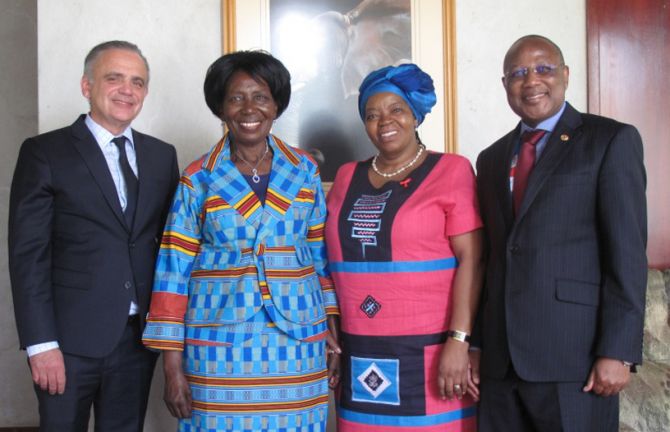
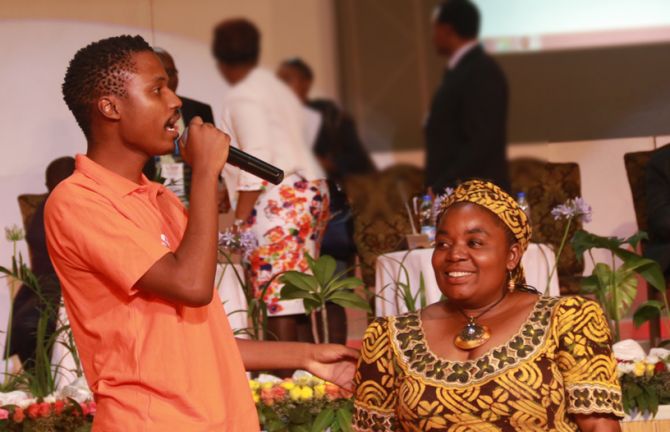
Update
ICASA celebrates World AIDS Day
02 December 2015
02 December 2015 02 December 2015UNAIDS Deputy Executive Director Luiz Loures joined representatives of key populations, people living with HIV, African political leaders and other dignitaries in a special event to commemorate World AIDS Day during the 18th International Conference on AIDS and STIs in Africa, which is taking place in Harare, Zimbabwe.
The theme of the event was “Getting to zero in Africa—Africa’s responsibility, everyone’s responsibility.” Speakers described the progress that had been made against HIV since World AIDS Day was first marked in 1988, while stressing the need to Fast-Track the response to end the AIDS epidemic by 2030 and the importance of leaving no one behind.
Young people entertained the audience with a series of performances, including poems, dances and a special World AIDS Day song.
Earlier in the day, the African Union held a World AIDS Day event calling for renewed action to end the epidemics of HIV, tuberculosis and malaria by 2030, with a number of ministers and parliamentarians from leading African countries in attendance. In her keynote address, the Vice-President of Zambia, Inonge Wina, called on parliamentarians to emphasize the key role of policy-makers in ensuring sustained funding for the response to AIDS and in creating an enabling legal environment, particularly for women.
Quotes
“I am the mother of a beautiful little girl who was born free from HIV thanks to antiretroviral medicines. I am so grateful that my daughter is happy and healthy. I encourage everyone to get tested and to adhere to their treatment.”
“On our continent, AIDS has the face of a woman. We cannot end the AIDS epidemic by 2030 if we do not empower our mothers, sisters and children.”
“We are voices in places where language is a barrier, so we speak about HIV and all related issues through music—we use music as a tool to fight against HIV and discrimination.”
The goal of zero new HIV infections, zero AIDS-related deaths and zero discrimination can only be achieved through strong leadership at all levels and through the inclusion of key populations.”
“Sex workers, gay men and other men who have sex with men, transgender people, people who use drugs, people living with HIV, people with disabilities—it is only through solidarity and leaving no one behind that we can end the AIDS epidemic.”
“We all share responsibility to end the epidemic and eliminate HIV as a public health threat. Together, we can create a far different future. One that delivers life-saving services and drives transformational change for mothers, fathers, brothers, sisters and children, who deserve an AIDS-free future.”
Region/country
Related

Update
Voluntary medical male circumcisions reach 10 million in sub-Saharan Africa
03 December 2015
03 December 2015 03 December 2015More than 10 million men and adolescent boys in sub-Saharan Africa have undergone voluntary medical male circumcision for HIV prevention, according to a recent announcement made by the World Health Organization (WHO).
At the 18th International Conference on AIDS and STIs in Africa (ICASA), taking place in Harare, Zimbabwe, WHO and UNAIDS co-hosted a satellite session to celebrate the achievement, but also to call for redoubling efforts on reaching adolescent boys and men.
This milestone is an impressive example of how communities, countries and global health agencies can work together to provide HIV prevention services to men and generate significant results towards ending the AIDS epidemic.
Randomized controlled trials have shown that voluntary medical male circumcision reduces the risk of acquiring HIV by about 60%. Follow-on studies have shown that this level of protection may increase over time to reach 74%.
Voluntary medical male circumcision, a one-time procedure, provides lifelong partial protection against HIV and is key to achieving the strategic milestone of reducing new HIV infections to fewer than 500 000 by 2020. In its new strategy, UNAIDS calls for 27 million new medical male circumcisions over the next five years as a core component of the Fast-Track approach.
Quotes
“In 2012, I chose with 35 other members of parliament to be circumcised. We need to lead from the front. It is one thing to be committed; it is another to take practical action. I call on all men, young and old, to be part of the solution. You are participating in building a nation. Voluntary medical male circumcision is smart. It is safe. It reduces HIV transmission.”
“We know our push for 27 million new medical male circumcisions as a part of the Fast-Track Strategy feels like we are again asking too much. It is based on our success with previous asks that seemed impossible. We ask because we have to. We cannot break this epidemic without scaling up voluntary medical male circumcisions.”
“Of all the HIV prevention interventions, voluntary medical male circumcision is among the most practical. Voluntary medical male circumcision continues to work well because of the testimonies from men in our communities. In Zambia, we have seen an entire nation transformed.”
“This is good news! We know we are not there yet, but having worked together we have made great progress. Let’s celebrate. Let’s thank each one of the 10 million who has stepped up.”
“On World AIDS Day, we announced that, as of 30 September 2015, the United States President’s Emergency Plan for AIDS Relief has supported more than 8.9 million voluntary medical male circumcisions in eastern and southern Africa. Further scale-up of voluntary medical male circumcision is key to achieving control of the HIV/AIDS epidemic in these regions, but partnerships are also critical. We cannot do it alone. We need other donors to join us in this effort.”
Region/country
Related

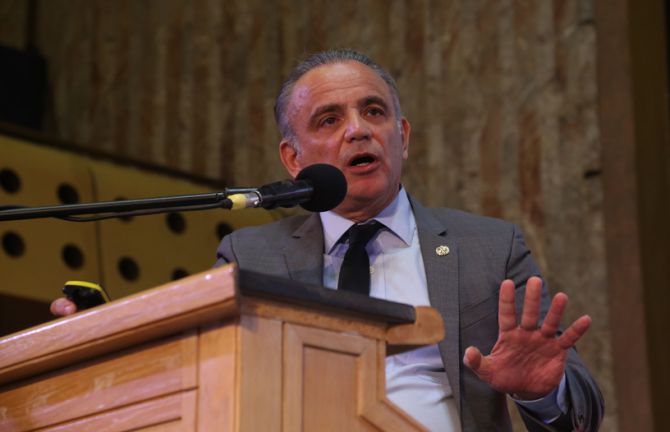
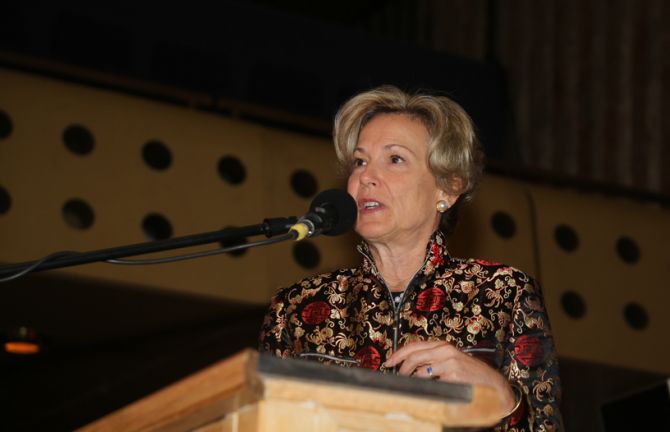
Update
Discussing Fast-Track at ICASA
01 December 2015
01 December 2015 01 December 2015The importance of accelerating the response to HIV over the next five years was discussed at a UNAIDS special session held on 30 November at the 18th International Conference on AIDS and STIs in Africa (ICASA), which is taking place in Harare, Zimbabwe.
Panelists noted how the UNAIDS Fast-Track approach offered a road map to break the epidemic, putting the world on course to end AIDS as a public health threat by 2030.
Countries are adopting the UNAIDS Fast-Track approach with the aim of doubling the number of people accessing HIV treatment by 2020. Fast-Track includes a 90–90–90 treatment target of ensuring that 90% of people living with HIV know their HIV status, 90% of people who know their HIV-positive status are on treatment and 90% of people on treatment have suppressed viral loads.
The participants also discussed the successes of highly effective HIV prevention and treatment programmes, such as pre-exposure prophylaxis, voluntary medical male circumcision and tailored sexual and reproductive health services.
Earlier at ICASA, UNAIDS Deputy Executive Director Luiz Loures and United States Global AIDS Ambassador Deborah Birx took part in a plenary session entitled “Ending AIDS by 2030: an achievable goal” and spoke about the importance of communities.
Quotes
“Regional partners are definitely important, but it is all about people. Fragile communities are everywhere, but community responses achieve results. Reaching the end of AIDS is doable. Nelson Mandela’s call to “break the silence” is even more important today.”
“If the world came together and adopted the World Health Organization guidelines, we could double the number on treatment. This is bold. This is extraordinary, but it is also possible.”
“Without the involvement of people living with HIV, there is no ending of AIDS. I call upon governments, funders and partners to invest in communities, because it is these communities that are going to help us get to the end of AIDS.”
Related

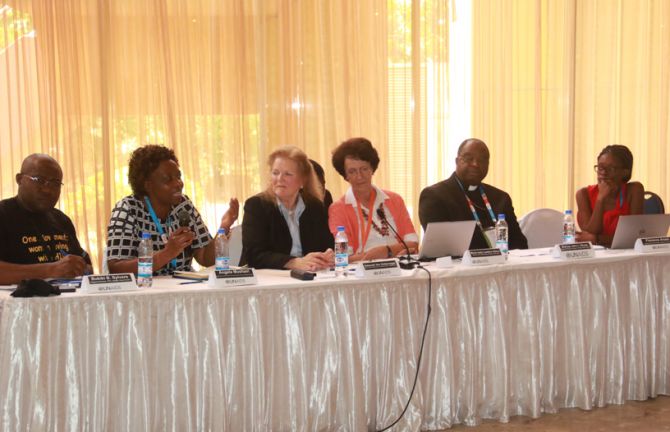
Update
Optimizing prevention of mother-to-child transmission of HIV through community engagement and mobilization
02 December 2015
02 December 2015 02 December 2015In 2011, global leaders committed to working towards ending new HIV infections among children and reducing AIDS-related maternal mortality. They launched the Global Plan towards the elimination of new HIV infections among children by 2015 and keeping their mothers alive (Global Plan). The Global Plan prioritized 22 countries with the highest number of pregnant women living with HIV in need of services, encompassing more than 90% of all women in need of services to prevent mother-to-child transmission of HIV.
At the 18th International Conference on AIDS and STIs in Africa, which is taking place in Harare, Zimbabwe, UNAIDS hosted a discussion on how to maximize the role of communities in preventing mother-to-child transmission of HIV. The panel included prominent specialists and activists from Côte d’Ivoire, Kenya, Nigeria and Zimbabwe, who explored promising and innovative ways to accelerate progress towards the elimination of new HIV infections among children and the improvement of maternal health.
The Global Plan calls for broader thinking and action both within and outside the formal health-care delivery system. An important feature of country programmes since the beginning has been their emphasis on communities. Community-based programmes have increased demand for health services and commodities and strengthened their quality.
In addition, community organizations are building their capacity to advocate for better access to appropriate services in line with international guidelines, and are empowering themselves to ensure continuity of care for mothers and children within a family-based approach.
Quotes
“Communities remain at the heart of prevention of mother-to-child transmission of HIV programmes—they create the environment in which health-care services can be delivered most effectively. ”
“We realize that the health sector cannot do it alone. We are working hard, including through our prevention of mother-to-child transmission of HIV partnership forum and the networks of people living with HIV who are engaged in that forum. For the Ministry of Health, there is only so much that we can do. At the end of the day, the woman is going back into the community and the community needs to support her.”
“In our country, there is active community participation. As long as we have been working, since the eradication of malaria and polio, there was participation of the community, and so we worked at the community level. It is really important to work from the perspective of human rights and key populations. We could not get elimination of mother-to-child transmission of HIV without the community.”
“Churches, mosques and other places of worship should provide a ready-made platform to reach communities with life-saving information and services. Every community member, especially the leaders, should be agents of change.”
“Some of the best models are those that have been in place since the beginning of the epidemic such as the support groups, the ‘mentor mothers’ programme. But many of these community-based models are not funded, and we need more support to ensure the best results. Where there is no money, there is no sustainability.”
Related

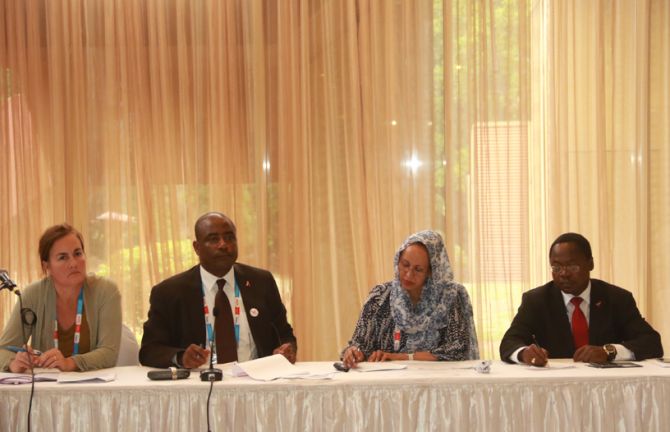
Update
AIDS in emergency, conflict and humanitarian contexts
02 December 2015
02 December 2015 02 December 2015Emergencies and conflicts around the world are causing a dramatic growth in the number of refugees, asylum seekers and displaced people. Climate change and population growth also force people to migrate, thus adding to the numbers of people on the move.
In 2013, 314 million people were affected by emergencies, of which 67 million people were displaced by natural disasters and conflicts. Of these, 1.6 million were people living with HIV. Migration and displacement are major issues affecting people’s health, including reducing their access to HIV prevention, treatment, care and support services.
In order to assess the implications of such human displacements, UNAIDS organized an event at the 18th International Conference on AIDS and STIs in Africa, which is being held in Harare, Zimbabwe. The event provided an opportunity for key stakeholders to share experiences and best practices in order to ensure that people affected by humanitarian emergencies can continue to access life-saving HIV services.
Increased vulnerability to HIV because of sexual violence, sexual coercion and other human rights violations in humanitarian emergencies, conflict and post-conflict settings was also discussed at the event.
Quotes
“Around the world, 1.6 million people living with HIV have been displaced by natural disasters and conflict. Unless we deal appropriately with people in humanitarian emergencies, we are definitely not going to achieve the three zeroes. HIV must be integrated into national disaster preparedness and response plans.”
“Djibouti has initiated programming to help refugees, but we cannot do it alone. We would welcome the development and implementation of a regional plan with technical support for joint action and implementation so that we can work under a harmonized approach with other countries.”
“In areas prone to conflict, we need to be prepared in advance. Antiretroviral medicines, commodities, task-shifting plans and the involvement of communities must all be part of contingency planning. Preparation must also include extra long-term supplies of medicines and we have to be ready.”
“When Ebola hit Liberia, the entire health system was brought to a standstill. The impact was not only on the health system but on all aspects of the country as a whole. What we really need is a rapid response and availability of resources. Secondly, we need strong community engagement. When the health system broke down, we turned to the community.”
Region/country
Related


Update
Women and girls face extraordinary burdens in humanitarian crises across the world, says UNFPA
07 December 2015
07 December 2015 07 December 2015The many crises, wars and natural disasters around the globe are leaving women and adolescent girls facing a significantly heightened risk of unwanted pregnancy, maternal death, gender-based violence and HIV, says a new report from the United Nations Population Fund (UNFPA).
The State of world population 2015—Shelter from the storm: a transformative agenda for women and girls in a crisis-prone world is a “call to action” to meet the needs and ensure the rights of tens of millions of women and girls caught up in the turmoil of conflict and disaster. More than 100 million people are now in need of humanitarian assistance, more than at any time since the Second World War.
Although remarkable progress has been made in providing women and girls with humanitarian services in the past 10 years, not enough is yet being done to address their particular vulnerabilities, the report argues. It highlights how, for example, their risk of HIV infection is increased and how this heightened risk should inform programmes and assistance. Women and girls experiencing humanitarian crises often face sexual and gender-based violence, including rape, which is a risk factor for HIV transmission. Other factors experienced include trafficking, transactional sex and sex work.
Access to HIV prevention and life-saving treatment services can also be significantly reduced or disappear completely in times of crisis. The availability of medicines for the prevention of mother-to-child transmission of the virus is often severely disrupted. In addition, women and girls with disabilities face extra vulnerability to HIV in crisis situations, with even more limited access to services and information.
Shelter from the storm sets out concrete ways in which vulnerabilities can be addressed. It refers to an internationally agreed raft of essential reproductive health services and supplies that should be available from the start of any crisis. This basic package includes programmes to prevent sexual violence and manage the consequences of it, reduce HIV transmission, prevent maternal and newborn death and illness, and integrate sexual and reproductive health care into primary health care.
Opportunities may emerge from crisis too, says the report. The example of HIV is cited, with well-run camps with sufficient resources enabling displaced people to have enhanced access to services.
There is also an emphasis on moving away from simply reacting to crises as they emerge and embracing a pre-emptive approach that promotes prevention, preparedness and resilience. The report argues that people who are healthy, educated and have their human rights protected are likely to have better prospects in the event of a disaster.
Related

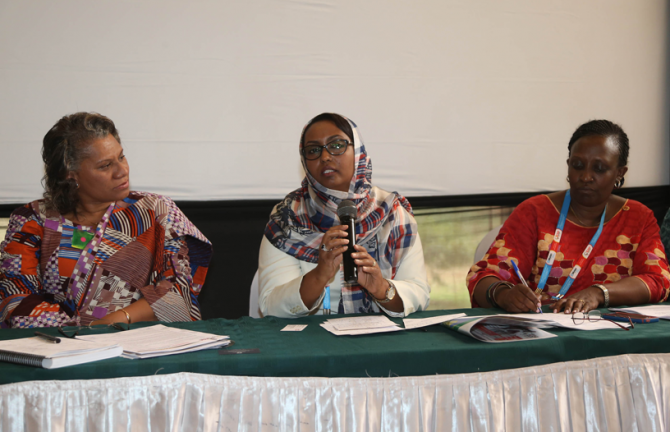
Update
An African Union common position for the post-2015 agenda
01 December 2015
01 December 2015 01 December 2015African leaders have been involved in a rigorous process to define a common African Union position for the post-2015 development agenda. Among the many goals and targets of the common position are those to end the AIDS epidemic and tuberculosis and malaria by 2030.
At the 18th International Conference on AIDS and STIs in Africa, being held in Harare, Zimbabwe, panellists at a UNAIDS special session discussed how the African Union common position aligns with the recently adopted Sustainable Development Goals. The participants stressed the need to reach the AIDS goals and targets within a much broader and more ambitious framework and discussed how to address existing gaps and leave no one behind.
Noting the importance of the 2016 United Nations High-Level Meeting on AIDS, the participants explored what Africa’s priorities are and how the continent should mobilize to achieve them.
Quotes
“The Sustainable Development Goals are interlinked. For my country and region, peace and security initiatives are our entry point to discussing and implementing family planning and HIV prevention.”
“The African Union has given us a platform to discuss and agree on key issues before global negotiations take place. The common African position is a great example of how Africa influenced and shaped the Sustainable Development Goals. Commitments such as the common African position and Abuja Declarations are great only if we implement or act on them; otherwise, these efforts remain theoretical.”
“UNAIDS has just developed a new strategy endorsed by all. This could be the basis of the political declaration for the upcoming High-Level Meeting on AIDS.”

